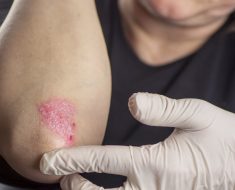Home cooks are increasingly seeing alarming headlines about national outbreaks of serious food-borne illnesses—and with the recent fervor over one of the worst E. coli outbreaks in the last decade, the topic of food safety has never been so relevant.
So when WebMD, the website which many turn to when they suspect a serious bout of food poisoning, published a list of dozen foods most likely to make you sick, we couldn’t help but take notice.
The list is based on information that the Centers for Disease Control and Prevention keeps for cooks looking to keep their kitchens as safe as possible. The shortlist of foods below are linked to food-borne illnesses more frequently than any other on the market. Luckily, there are steps you can take to reduce your chance of illness when eating them.
Which foods are the most likely to get you sick? They’re as follows:
Chicken, beef, turkey, and pork

Raw and undercooked meat and poultry are surefire ways to get you sick. Nearly all raw poultry contains a bacteria called campylobacter, which the CDC says is the leading cause of “diarrheal sickness” in the United States. Other illness-causing bacteria linked to questionable meat include salmonella, E. coli, Yersinia (commonly found on raw pork), and C. perfringens (one of the most common bacteria leading to short-term food poisoning.)
Vegetables and fruits

It’s crucial to front load your daily diet with tons of fresh vegetables and fruits, but the CDC points out that raw variations can often cause food poisoning from contamination with salmonella, E. coli, and listeria bacteria. The exterior of uncooked fruits and vegetables are especially tricky as they’re a breeding ground for bacteria during transportation from farm to table, and especially at risk for cross-contamination in the kitchen. There are more than a few ways to clean them, however, and cooking your veggies is a sure way to eliminate most risk.
RELATED: The Cringe-Worthy Reason You Should Toss Your Reusable Shopping Bag
Raw milk and cheese

Some might think it’s very tasty, but health officials say that raw milk—and the products made with unpasteurized milk—can carry ample bacteria including E. coli, listeria, and salmonella, among others. Other dairy items that are more likely to hide harmful bacteria is feta cheese, brie and camembert, queso fresco, ice cream, and yogurt.
Eggs

We watched as more than 200 million eggs were recalled due to a widespread salmonella contamination—the CDC says salmonella is often undetected, even for eggs that look clean and un-cracked. Choosing pasteurized eggs could help reduce that risk.
Raw shellfish and seafood

There is a greater chance to get sick with food poisoning from raw fish, yes. But raw shellfish is often more problematic than anything, with staples like oysters containing viruses and bacteria that could cause serious sickness—more than 100 people recently fell ill in California after eating raw oysters contaminated with norovirus.
RELATED: The Strict Royal Family Diet Restrictions Could Serve You Well
Sprouts:

Warm and humid growing conditions for things like alfalfa and bean sprouts also lend themselves to perfect growing conditions for salmonella, E. coli, and listeria. Thoroughly cooking sprouts before placing them in any dish can help reduce the chance of you getting sick.
Raw Flour:

The last item on the list is flour, which is usually raw and hasn’t been treated—and because we cook with it or use it in our baking, those germs are killed during cooking. Things like raw cookie dough have often been a source of spot for food poisoning given that the flour in these staples haven’t been cooked.
RELATED: Is It Food Poisoning? Or Something More Serious?
It’s nearly impossible to avoid food-borne illnesses altogether, but using the safety tips to enjoy the foods on the list above might save you from a firsthand experience with food poisoning. 1 in 6 people in the United States suffer through side effects of food-borne diseases, and more than 3,000 deaths each year are caused by foodborne pathogens, the CDC says.
Source: Read Full Article





